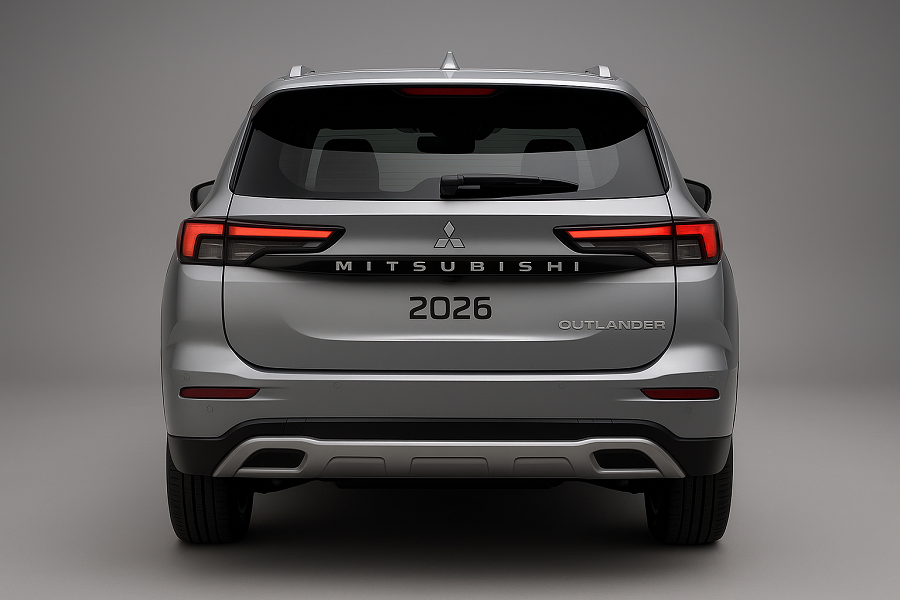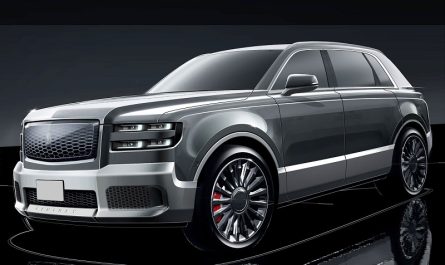Introduction to the 2026 Mitsubishi Outlander
The 2026 Mitsubishi Outlander represents a significant evolution in the compact SUV segment, blending affordability, versatility, and modern hybrid technology into a package that’s designed to appeal to families, commuters, and adventure seekers alike. As one of the few vehicles in its class offering a third-row seat, the Outlander stands out in a crowded market dominated by two-row crossovers. For 2026, Mitsubishi has made bold moves by transitioning the entire lineup to hybrid powertrains, addressing criticisms of sluggish performance in previous models while enhancing fuel efficiency and environmental credentials. This shift aligns with broader industry trends toward electrification, positioning the Outlander as a forward-thinking option for buyers who want practicality without sacrificing modern features.
Mitsubishi’s “Momentum 2030” business strategy underscores this update, promising a new or refreshed vehicle annually through the decade’s end. The 2026 Outlander embodies this commitment, featuring a new mild-hybrid 1.5-liter turbocharged four-cylinder engine that replaces the outgoing 2.5-liter unit sourced from Nissan. This change not only boosts torque but also improves acceleration, making the Outlander more responsive on highways and in city traffic. The plug-in hybrid electric vehicle (PHEV) variant receives its own enhancements, including a larger battery for extended electric range and interior refinements for better comfort.
In terms of design, the 2026 model retains the bold, angular styling introduced in recent years but incorporates subtle refinements to the grille, bumpers, and wheels. Inside, the cabin benefits from upgraded materials, increased sound insulation, and advanced tech like a redesigned wireless charger and complimentary connected services. Pricing details are forthcoming, but expectations point to it remaining one of the most affordable three-row SUVs on the market, potentially starting around $28,000 for base models.
This article delves deep into every aspect of the 2026 Mitsubishi Outlander, from its historical context to detailed specifications, performance analyses, safety features, and comparisons with rivals. We’ll explore its role in the evolving automotive landscape, including sustainability efforts and potential future developments. Whether you’re a prospective buyer, an automotive enthusiast, or simply curious about hybrid SUVs, this comprehensive guide aims to provide unparalleled insight.
Historical Evolution of the Mitsubishi Outlander
To fully appreciate the 2026 Mitsubishi Outlander, it’s essential to trace its lineage back through Mitsubishi’s storied history in the SUV segment. The Outlander first debuted in 2001 as the Airtrek in Japan, rebranded for international markets as a compact crossover that combined the ruggedness of Mitsubishi’s rally heritage with everyday usability. Early models were praised for their all-wheel-drive capabilities, drawing from the company’s success in events like the Dakar Rally.
The second generation, launched in 2006, expanded the Outlander’s appeal by offering more interior space and optional third-row seating, a feature that set it apart from competitors like the Toyota RAV4 and Honda CR-V. This era also saw the introduction of diesel engines in some markets, emphasizing efficiency. By the third generation in 2012, the Outlander embraced plug-in hybrid technology, becoming one of the first PHEVs in its class. This move was prescient, as global regulations began pushing for lower emissions.
The fourth generation, introduced in 2021, marked a partnership with the Renault-Nissan-Mitsubishi Alliance, sharing platforms and components to reduce costs. It featured a more premium interior and advanced safety systems, but critics noted underwhelming performance from the 2.5-liter engine. The 2026 model builds on this foundation, addressing those shortcomings with hybrid integration across the board.
Mitsubishi’s rally DNA remains evident in the Outlander’s Super All-Wheel Control (S-AWC) system, which optimizes torque distribution for enhanced stability. Over the years, the Outlander has sold millions worldwide, with strong markets in Europe, Asia, and North America. The 2026 iteration continues this legacy, evolving to meet demands for sustainability while maintaining affordability.
Looking back, the Outlander’s journey reflects broader shifts in consumer preferences—from gas-guzzling SUVs to efficient, tech-laden family haulers. Mitsubishi’s commitment to innovation, such as early adoption of PHEV tech, has positioned the brand as a quiet leader in electrification.
Exterior Design and Styling
The exterior of the 2026 Mitsubishi Outlander exudes confidence with its “Dynamic Shield” front fascia, characterized by sharp LED headlights, a prominent grille, and sculpted lines that convey motion even at a standstill. For 2026, subtle updates include a revised grille and front bumper on the PHEV variant, along with new 20-inch wheel designs and smoked taillamps. These changes enhance aerodynamics, contributing to better fuel efficiency.
Measuring approximately 185 inches in length, the Outlander offers a compact footprint suitable for urban parking while providing ample interior space. The wheelbase stretches to about 106 inches, aiding stability and ride comfort. Available in a palette of vibrant colors, including new shades like Amazon Green and Cosmic Blue, the SUV appeals to a wide audience.
Higher trims feature dual-tone alloy wheels and roof rails for added utility, while the SEL Black Edition adds black accents for a sportier look. The Ralliart edition, returning for 2026, incorporates rally-inspired elements like red accents and performance-tuned suspension.
From a design philosophy perspective, Mitsubishi draws inspiration from Japanese craftsmanship, emphasizing harmony between form and function. The Outlander’s styling balances aggression with elegance, making it versatile for city streets or off-road trails.
Interior Comfort and Space
Step inside the 2026 Mitsubishi Outlander, and you’re greeted by a refined cabin that punches above its price point. Premium materials, including soft-touch surfaces and available leather upholstery, create an upscale ambiance. The PHEV model receives a mid-cycle refresh with new interior materials, a redesigned center console, and improved sound insulation for a quieter ride.
Seating for up to seven passengers is a key selling point, with the third row best suited for children or short trips. Front seats are heated and cooled in higher trims, with an 8-way power-adjustable driver’s seat offering memory functions. Cargo space is generous, expanding to over 64 cubic feet with seats folded.
The dashboard features a 12.3-inch digital gauge cluster on premium models and a 9-inch infotainment touchscreen standard across the lineup. Physical buttons for climate control ensure ease of use, while a panoramic sunroof on SEL trims floods the cabin with light.
Comfort extends to rear passengers with ample legroom and USB ports. Mitsubishi has focused on ergonomics, positioning controls intuitively to minimize distraction.
Engine and Performance Specifications
At the heart of the 2026 Outlander is a new mild-hybrid powertrain: a 1.5-liter turbocharged four-cylinder engine paired with an electric motor, delivering 177 horsepower and 207 lb-ft of torque. This setup replaces the previous 2.5-liter engine, offering improved acceleration and efficiency.
The continuously variable transmission (CVT) is tuned for smoothness, with paddle shifters for manual control. All-wheel drive is available, enhancing traction in various conditions.
The PHEV variant ups the ante with a larger battery, promising extended electric-only range and quicker acceleration. Suspension updates for 2026 improve ride quality and handling, making the Outlander more engaging to drive.
Fuel economy figures are pending EPA certification, but expectations are high, potentially exceeding 30 mpg combined for the mild hybrid.
Performance Specs Table
| Feature | Mild Hybrid | PHEV Variant |
|---|---|---|
| Engine | 1.5L Turbo 4-Cyl + Electric | 2.4L 4-Cyl + Dual Motors |
| Horsepower | 177 hp | 248 hp (system) |
| Torque | 207 lb-ft | 332 lb-ft (system) |
| Transmission | CVT | e-CVT |
| Drivetrain | FWD/AWD | AWD Standard |
| 0-60 mph | ~8.5 seconds (est.) | ~7.0 seconds (est.) |
| Towing Capacity | 1,500 lbs | 1,500 lbs |
Hybrid Technology Breakdown
The 2026 Outlander’s hybrid systems represent Mitsubishi’s push toward electrification. The mild hybrid uses a 48-volt system to assist the gasoline engine, providing seamless boosts during acceleration and regenerative braking for energy recovery.
In the PHEV, a 20-kWh battery (up from previous models) allows for up to 38 miles of electric-only driving. Dual electric motors work with the gas engine for all-wheel drive without a traditional driveshaft.
Charging times vary: Level 2 charging takes about 4 hours, while DC fast charging can reach 80% in 38 minutes. Drive modes include EV, Hybrid, and Charge, optimizing power delivery.
This technology not only reduces emissions but also lowers operating costs, with potential tax incentives for PHEV buyers.
- Advantages of Mild Hybrid: Lower entry price, improved fuel economy without plugging in.
- Advantages of PHEV: Zero-emission commuting, greater total range.
- Regenerative Braking: Captures energy during deceleration to recharge the battery.
- Energy Management System: Intelligently switches between power sources for efficiency.
Safety Features and Ratings
Safety is paramount in the 2026 Outlander, with Mitsubishi’s suite of advanced driver-assistance systems (ADAS). Standard features include forward collision mitigation, blind-spot monitoring, and lane-keeping assist.
Higher trims add adaptive cruise control, rear automatic braking, and a 360-degree camera. The S-AWC system enhances stability in slippery conditions.
Crash test ratings from NHTSA and IIHS are expected to be strong, building on previous models’ 5-star scores. New for 2026: improved pedestrian detection and traffic sign recognition.
Key Safety Features List
- Automatic Emergency Braking with Pedestrian Detection
- Lane Departure Warning and Intervention
- Blind-Spot Warning with Rear Cross-Traffic Alert
- Adaptive Cruise Control with Stop-and-Go
- Multi-View Camera System
- Tire Pressure Monitoring System
- Seven Airbags, Including Driver’s Knee Airbag
Technology and Infotainment
The Outlander’s tech suite is modern and user-friendly. The MI-Pilot Assist system combines adaptive cruise and lane centering for semi-autonomous driving.
Infotainment runs on a responsive touchscreen with Apple CarPlay and Android Auto wireless compatibility. A 12-speaker Yamaha audio system is available, delivering crisp sound.
Connected services include a five-year trial of Safeguard features like automatic collision notification and a 12-month Remote Services trial for app-based control.
Wireless charging and multiple USB ports keep devices powered. Voice recognition handles navigation and climate adjustments.
Trim Levels and Pricing
The 2026 Outlander offers expanded trims: ES, SE, LE (new), SEL, SEL Black Edition, and Ralliart.
Base ES starts with essential features, while SEL adds luxury like leather seats and a sunroof. Pricing is TBA, but estimates suggest $28,000-$40,000 range.
Trim Comparison Table
| Trim | Key Features | Est. Price |
|---|---|---|
| ES | 18″ Wheels, 9″ Screen, Basic ADAS | $28,000 |
| SE | 20″ Wheels, Heated Seats, Wireless Charging | $31,000 |
| LE | Mid-Level Tech, Alloy Wheels | $33,000 |
| SEL | Leather, Panoramic Roof, Premium Audio | $36,000 |
| Black Ed. | Black Accents, Sport Tuning | $38,000 |
| Ralliart | Performance Suspension, Red Accents | $40,000 |

Comparisons with Competitors
The Outlander competes in a fierce segment. Versus the Toyota RAV4 Hybrid, it offers a third row but lags in resale value. The Honda CR-V Hybrid is more refined but pricier without PHEV options.
The Hyundai Tucson Hybrid matches in features but has a smaller interior. The Outlander’s advantage: affordability and hybrid variety.
Competitor Comparison Table
| Model | Starting Price | Fuel Economy (mpg) | Third Row? | HP/Torque |
|---|---|---|---|---|
| 2026 Outlander Mild Hyb | $28,000 (est.) | 30+ combined (est.) | Yes | 177/207 |
| Toyota RAV4 Hybrid | $31,725 | 39 combined | No | 219/NA |
| Honda CR-V Hybrid | $34,350 | 40 combined | No | 204/247 |
| Hyundai Tucson Hybrid | $32,575 | 38 combined | No | 226/258 |
| Subaru Forester Hybrid | $30,000 (est.) | 35 combined (est.) | No | 145/188 |
Reviews and Expert Opinions
Early reviews praise the 2026 Outlander’s powertrain upgrades, noting quicker acceleration and a more engaging drive. Critics appreciate the interior refinements and value proposition.
YouTube reviewers highlight its family-friendly aspects, with one calling it “way better” than predecessors. However, some note it still feels dated compared to rivals.
Green Car Journal named the Outlander and PHEV joint 2026 Family Green Car of the Year, a first for sibling models.
Ownership Costs and Maintenance
Ownership costs are low, with Mitsubishi’s 10-year/100,000-mile powertrain warranty. Fuel savings from hybrids offset higher upfront costs.
Maintenance intervals are standard, with complimentary services on some trims. Insurance rates are competitive due to strong safety scores.
Resale value has improved, though not matching Toyota levels. Total cost over five years: estimated $35,000 including fuel and maintenance.
Environmental Impact and Sustainability
The hybrid shift reduces CO2 emissions significantly. The PHEV’s electric mode enables zero-emission driving, ideal for urban areas.
Mitsubishi’s sustainability efforts include recycled materials in the cabin and efficient manufacturing. The Outlander supports global goals like net-zero emissions by 2050.
Future Outlook for the Outlander Lineup
Looking ahead, a “Rugged Edition” is rumored for late 2026 with all-terrain tires and roof racks. The next full redesign around 2028 may incorporate more alliance tech.
Electrification will deepen, potentially with full EV variants. Mitsubishi’s alliance with Renault hints at shared platforms for future models.
Conclusion
The 2026 Mitsubishi Outlander is a compelling choice for those seeking an affordable, versatile hybrid SUV with three rows. Its updates address past weaknesses, offering better performance, tech, and efficiency. While not the flashiest in its class, it delivers exceptional value and practicality.
Whether commuting or road-tripping, the Outlander proves Mitsubishi’s resilience in a competitive market. As hybridization becomes standard, this model positions the brand for success.


